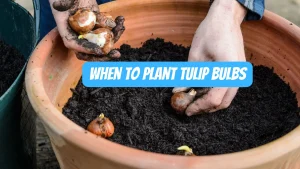Black Tulip Magnolia Problems: Causes and Solutions
The Black Tulip Magnolia is a beautiful and attractive tree famous for its deep purple and almost black flowers. However, caring for it can be challenging. Here, we will learn about the common problems associated with the Black Tulip Magnolia and their solutions.
1. Yellowing of Leaves

Problem: Leaf yellowing is a common problem that can be caused by nutrient deficiencies, excessive watering, or poor soil quality. Solution: Make sure the soil has proper drainage. Periodically give the plant the right amount of fertilizer that contains nutrients like nitrogen, phosphorus, and potassium.
2. Dropping of Flowers

Problem: Premature flower drops can be caused by climate change, extreme temperatures, or inadequate nutrition. Solution: Give the plant enough sunlight and water to protect it from the cold. Use mulch to maintain soil moisture during the summer season.
3. Fungal Infection

Problem: Fungal infection in Black Tulip Magnolia can cause black spots or leaf rotting. Solution: Clean the area around the plant occasionally to prevent fungal disease. Use antifungal drugs when needed.
4. Pest Infestation

Problem: Pests like aphids, scales, and caterpillars can harm the plant. Solution: Get rid of the pests using natural insecticides or neem oil. Check the plant’s leaves occasionally and remove the pests by hand.
5. Low Flowering
Problem: Low flowering can be due to the plant’s age, lack of nutrition, or excessive pruning. Solution: Provide adequate sunlight to the plant and avoid excessive pruning. Improve the plant’s nutritional status by giving it seasonal fertilizer.
6. Cold Damage
Problem: Cold or frost during the winter season can damage Black Tulip Magnolia. The plant can become weak due to the cold’s effect on leaves and branches. Solution: To conserve heat, use mulch around the plant’s roots before winter. Cover the plant with cloth or burlap if the cold is too severe.
7. Soil Acidity (pH)
Problem: Soil with the wrong pH level can hinder the plant’s growth. In acidic or very alkaline soil, nutrients are not absorbed properly. Solution: Slightly acidic soil (pH 5.5 to 6.5) is best for Black Tulip Magnolia. Check the soil pH level and make changes if needed.
8. Root Rot
Problem: Excessive watering or poor drainage can cause the plant’s roots to rot, leading to death. Solution: Make sure the soil does not stay wet for long after watering the plant. Plant the plant in a location with good drainage.
9. Nutrient Deficiency
Problem: Nutrient deficiencies can change the colour of leaves and slow the plant’s growth. Solution: Every season, give the plant a balanced fertilizer containing magnesium, calcium, and other essential elements.
General Tips for Care
Water the plant deeply once a week, especially in summer.
Do not splash water on the leaves to avoid fungal infections.
Maintain open spaces around the plant so that air can circulate properly.
Conclusion
Maintaining the Black Tulip Magnolia’s health demands patience and caution. With the right care and appropriate measures, you can enjoy its beautiful and unique flowers. One of the main principles of caring for this plant is to provide an environment close to natural conditions so that the plant remains healthy and free from problems.




